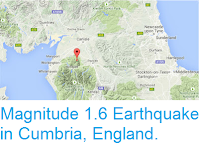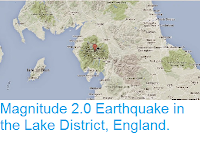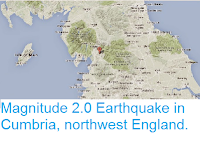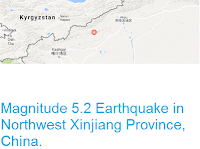The Younger Dryas is the name given to a period of abrupt cooling at the end of the last ice age, when temperatures, which had been rising for several thousand years, abruptly dropped for about a thousand years, and glaciers spread back into many areas from which they had disappeared. The cause of this cooling is unclear, and this uncertainty has led to several theories, with no evidence having emerged which strongly supports any one theory. One notable hypothesis is the proposition that the onset of the Younger Dryas may have been caused by a comet impacting into the Earth, an idea which has considerable popular appeal, despite being viewed with some scepticism by much of the scientific community. A number of lines of evidence have been put forward to suit this idea, but most are essentially self-referential, for example the extinction of the North American Megafauna and disappearance of the Clovis Culture, again in North America, events associated with the end of the Pleistocene and which are the sort of events we would expect around an abrupt change in climate, whatever the cause of that change (the extinction of the North American Megafauna was almost certainly the result of Human activity, but this does not rule out climate as an ultimate cause, as a sharp change in climate is likely to result in a similarly abrupt change in Human behaviour).
Sweatman and Tsikritsis’ theory rests upon several lines of evidence. First of these is the date of the complex. This is based upon a carbon isotope date obtained from material from a plaster wall connecting the pillars at the site, which gives an age of about 11 530 before the present; or about 9515 BC.
Secondly Sweatman and Tsikritsis propose that several animal symbols on the stone pillars at the site are representations of asterisms (constellations), i.e. groups of stars which appear close to one another in the sky, and which people have long interpreted as representations of animals or other important objects, for example a Scorpion is identified as a representation of the constellation of Scorpius, while a Vulture- or Eagle-like Bird as a representation of the constellation of Sagittarius. Furthermore, a disk-shaped marking is close to the wing of the Sagittarius-Bird, which Sweatman and Tsikritsis interpret to indicate that the Sun was in the constellation of Sagittarius at one of the solstices or equinoxes. They observe that the Sun is currently in Sagittarius during the Winter Solstice, that it was in Sagittarius during the Autumnal Equinox around 4350 BC, that it was in Sagittarius during the Summer Solstice in 10 950 BC and the Spring Equinox around 18 000 BC. Moreover, they note that three other symbols present (a Frog, an Ibex and a Bird) represent the constellations Virgo, Gemini and Pisces, constellations which would have fallen on the Spring Equinox, Winter Solstice and Autumn Equinox, respectively.
Pillar 43, Enclosure D, also known as the Vulture Stone of Göbekli Tepe. Sweatman & Tsikritsis (2017).
Finally Sweatman and Tsikritsis provide several lines of evidence that they suggest may represent cometary impacts on the Earth. These include the shape of a belt buckle worn by a human figure, which resembles the shockwave generated by a bolide moving at hypersonic speeds. Secondly a Fox symbol on one of the pillars could potentially represent a comet, the tails of Foxes having been used to symbolise comets in some (much later) art (though Sweatman and Tsikritsis admit this is dubious). Thirdly several Snakes are present on pillars at the site, which may be symbols of death and destruction (Snakes have a poor representation in mythology; in Ancient Egypt, a Snake was the symbol of Set, who murdered the fertility god Osiris, while in Judeo-Christian mythology a Snake tempted Adam and Eve to eat from the tree of forbidden knowledge, leading to their being expelled from paradise). Fourthly the belt symbol has an H-shaped motif, which may represent the stars around the pole around 10 950 BC combined with crescent shapes which may represent phases of the Moon, which taken together could indicate the night sky or divine beings in the sky. Fifthly a broach or pendant has a symbol which appears to represent an eclipse, which Sweatman and Tsikritsis suggest should not be taken as a literal indication of an eclipse, but rather a symbolic representation of a darkening of the Sun, possibly caused by a cometary impact. Finally, a headless human figure is present on one of the pillars, which may represent an event leading to massive loss of life.

Close-ups of pillar 18, Enclosure D. Part (a) shows the belt and belt buckle), part (b) shows the Fox held under its right arm, while part (c) shows the ‘eclipse brooch’ under the head. Sweatman & Tsikritsis (2017).
From this evidence Sweatman and Tsikritsis conclude that symbols at the Göbekli Tepe complex represent a cometary impact around the Summer Solstice in 10 950 BC, which was constructed over a thousand years after the event, in about 9515 BC. Furthermore, they suggest such an impact could be associated with the Taurid Meteor Shower, which would have passed at about this time.
However there are several problems with this scenario, both regarding the dating and the symbolism of the site.
Firstly the date ascribed to the site needs to be viewed with some suspicion, as it would make the Göbekli Tepe complex several thousand years older than any similar structure, with a complex pattern of carved relief images with apparent symbolic meaning. Such a remarkable claim requires exceptional evidence to support it, which is not provided by a single carbon date obtained from material within a wall. Isotope dating methods are generally considered to be extremely reliable, but not infalable, and a number of different readings would usually be used to establish a reliable date, whereas Sweatman and Tsikritis cite an earlier study which used only a single reading. If this were accepted, a date from a plaster wall would not be considered reliable unless it can be established that the wall does not contain any older material. Furthermorre, even if this date could be taken as reliable, it is a thousand years after the date of the supposed impact, requiring precise astronomical information to have been preserved through oral history for a thousand years, through a time of global cataclysm with radical changes in climate.

Pillar 2 from Enclosure A, with three animal symbols in series. Sweatman & Tsikritsis (2017).
Next there is the symbolism of the carvings, which even if the interpretation of the symbols as constellations is accurate (and this does not seem unreasonable) cannot necessarily be used to imply a cometary strike on a precise date for a number of reasons. Firstly the dating implied from the inscriptions is somewhat speculative; a disk close to a symbol representing Sagittarius does not necessarily represent the Summer Solstice occurring in Sagittarius; potentially it could mean ‘when there is a Full Moon in Sagittarius’ or just ‘when the Sun is in Sagittarius’ (which could well have indicated a time of year to the monument-makers, who are unlikely to have known that the solstices progressed through the constellations over thousands of years); the positions of Virgo, Gemini and Pisces relative to Sagittarius cannot be used to make inferences about the age of the carvings or the events they depict, as these will always be three, six and nine months ahead and behind, regardless of where the solstices fall.
Next there is the interpretation of the symbols. The interpretation of some of the symbols as representations of constellations does not seem unreasonable, but can only possibly be a hypothesis; there is no actual proof of this idea. The idea that all the symbols represent astronomical phenomena is even more untestable. None of the symbols appear to directly represent comets or meteors, and even if the inscriptions do represent a series of constellations combined with dire warnings about some terrible catastrophe (which in itself is largely speculation based upon the idea that figures such as Snakes represent something bad happening), then plenty of more recent peoples have made associations between the stars and strictly terrestrial disasters, and there would be no reason to assume that the builders of Göbekli Tepe would not have done the same.

Pillar 38 from Enclosure D, with three animal symbols in series. Sweatman & Tsikritsis (2017).
Finally there is the belt buckle itself. A buckle is essentially a metal clip on a leather or cloth strip, which can hold the strip in place while bearing some strain, either to support the weight of weapons or tools hung from the belt or to hold garments up. This requires a reasonable level of metal-making skill; a weak metal buckle will rapidly snap or bend. In Europe this seems a familiar part of the ancient tool kit, both the Greeks and Romans used buckles, but older civilizations did not; buckles were unknown to the Egyptians of the Old Kingdom and the peoples of Ancient Mesopotamia, they were never invented in the New World, nor in Medieval Japan, where people had advanced metallurgical skills but a shortage of metals. Of course the interpretation of this object as a buckle could be questioned, but this seems a more reasonable interpretation than that ascribed to many other symbols at the site (an ovoid shape on a band separating the upper and lower parts of a Human body at the waist), which raises serious problems with the interpretation of Göbekli Tepe as a particularly ancient site.
See also...





































